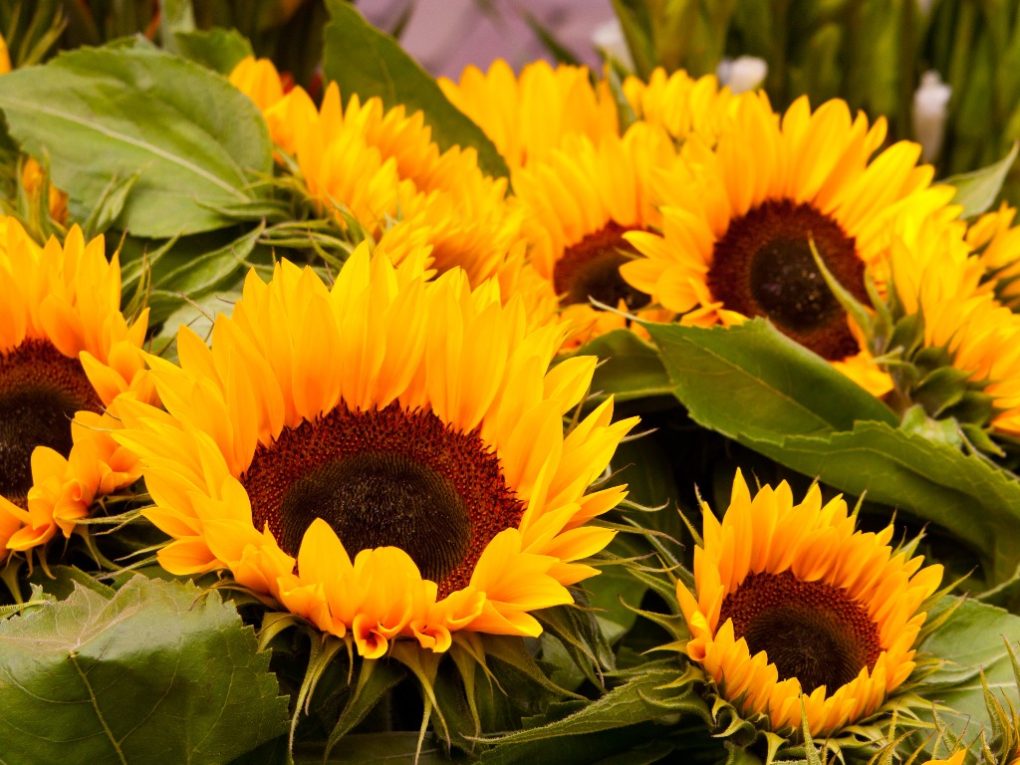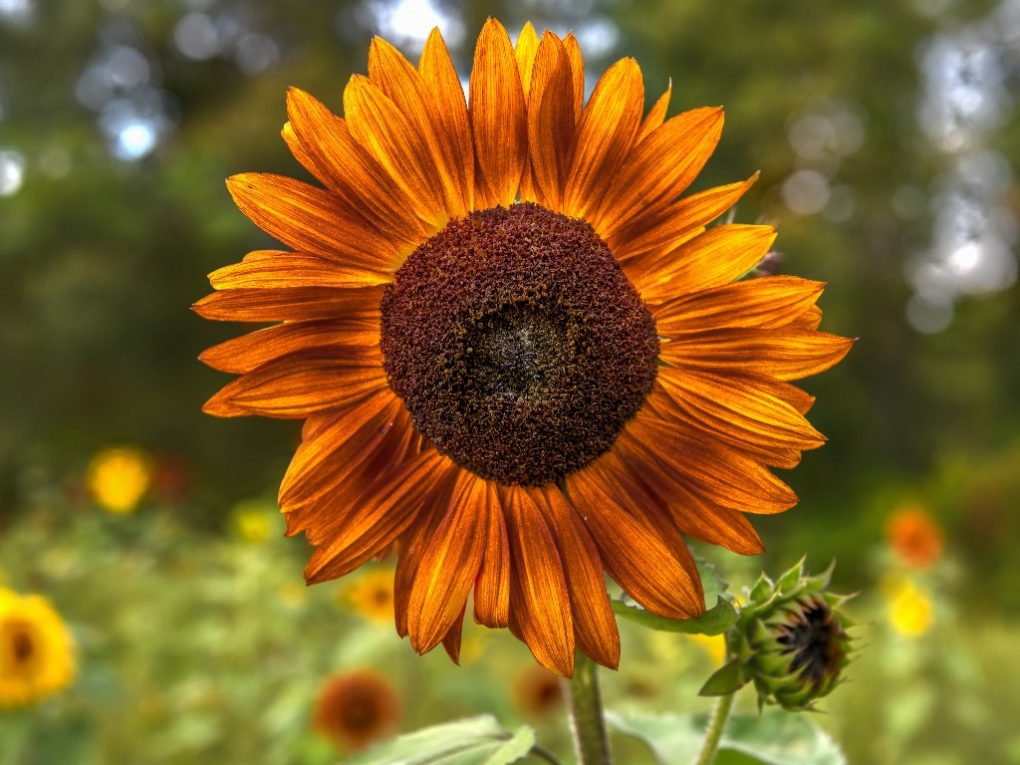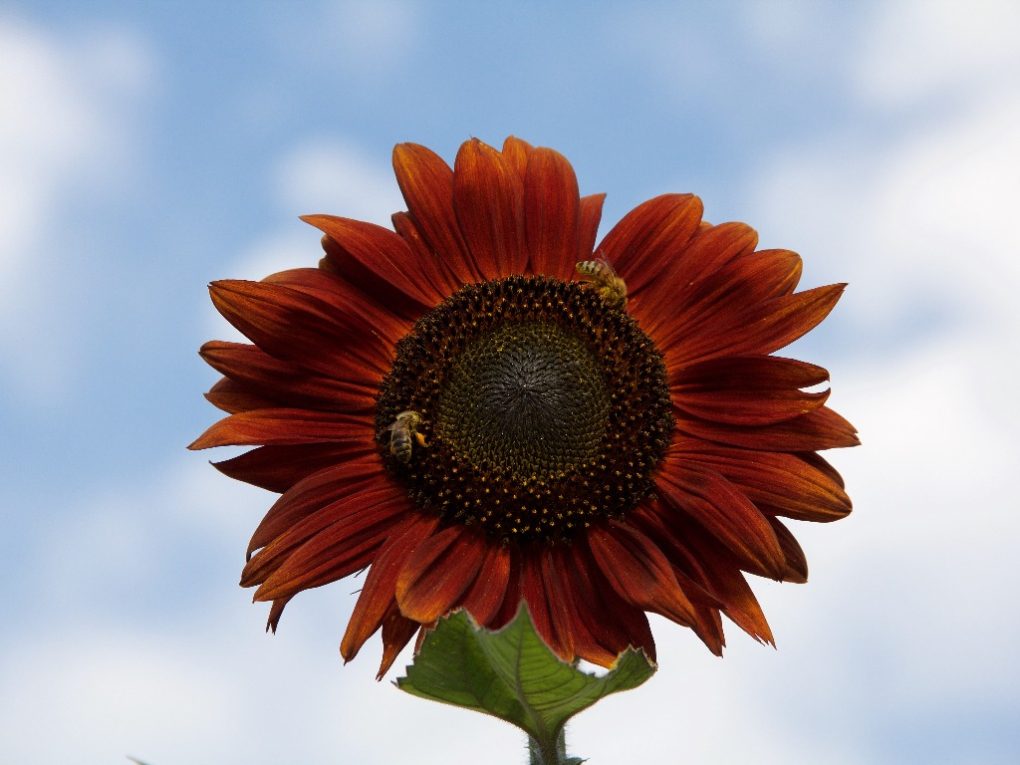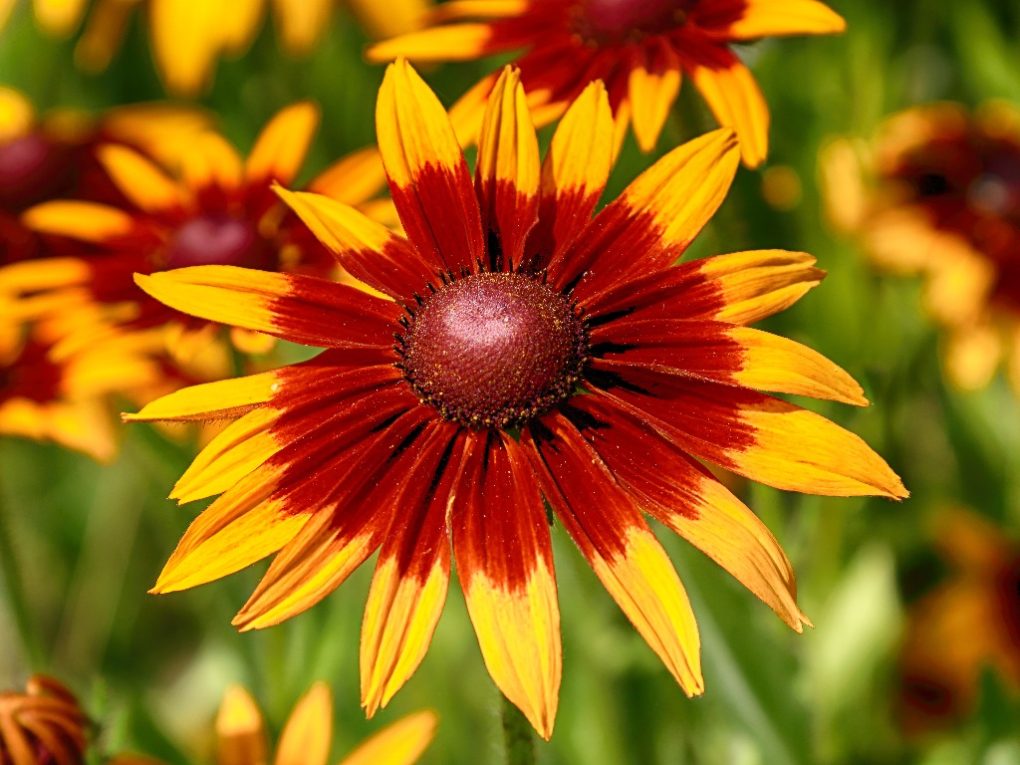Do Sunflowers Come in Different Colors: Understanding Sunflower Colors
Yes, sunflowers come in a variety of colors. The most common sunflowers have yellow petals and a dark brown center disk, but some varieties have orange, red, burgundy, white, and bi-colored petals. The center disk can also vary in color, ranging from dark brown to almost black or green. Despite this, some artificially dyed blue sunflowers are available on the market. However, it’s important to note that these flowers are not considered blue sunflowers since the color is unnatural.
Some varieties even have striped or speckled petals. So, while the classic image of a sunflower is a yellow bloom with a dark center disk, there is a lot of diversity in sunflower colors and patterns.

Table of Contents
Sunflower Colors
Yellow
Yellow sunflowers are known for their bright, cheerful, and warm color. The color of a yellow sunflower is typically a rich, golden yellow, which can range in tone from pale yellow to deep mustard yellow. This color is created by the presence of pigments called carotenoids, which are also responsible for the orange color of carrots and the red color of tomatoes.
The yellow color of a sunflower is not uniform throughout the entire flower. The sunflower’s petals can vary in tone, with the outermost petals often being a brighter, more intense shade of yellow than the inner petals. This color variation can give the flower a dynamic, three-dimensional appearance.
In addition to the petals, the sunflower’s center contains a distinctive disc-shaped structure called the “head”. The head comprises hundreds or thousands of tiny flowers called florets arranged in a spiral pattern. The center of the head is usually a dark brown or black color, which provides a striking contrast to the bright yellow petals.
Orange
Orange sunflowers are a beautiful and striking variety of sunflowers that have a bright and vivid color. The color of an orange sunflower can range from a deep, rich orange to a softer, more muted peach or apricot tone. Like in yellow sunflowers, the presence of carotenoids creates an orange color.

Orange sunflowers are a popular choice for floral arrangements and decorations, adding a bold and vibrant pop of color to any space. They are often used in fall-themed arrangements or tropical-inspired bouquets. In addition to their beauty, orange sunflowers symbolize energy, enthusiasm, and warmth, making them a popular choice for gifts and other special occasions.
Red
Red sunflowers are a unique variety of sunflowers with a deep and vibrant color. The color of a red sunflower can range from a deep, burgundy red to a brighter, scarlet red, depending on the variety. The color is created by pigments called anthocyanins, which are also responsible for the red and purple colors found in many fruits and vegetables.
One of the most distinctive features of a red sunflower is the contrast between the bright red petals and the dark center disk, which is usually a deep brown or black color. This contrast creates a bold, eye-catching appearance that will draw attention.
Burgundy
Burgundy sunflowers have a deep and rich color. The color of a burgundy sunflower can range from a deep, almost-black purple to a dark maroon, depending on the variety. Like the red sunflower, this color is also created by anthocyanins.
The petals of a burgundy sunflower are usually large and flat, with a slightly velvety texture. Depending on the variety of sunflowers, they can vary in shape and size but are typically arranged in a spiral pattern around the center disk. The petals may be smooth or slightly ruffled, giving the flower a unique and interesting texture.

White
White sunflowers are a beautiful and elegant variety of sunflowers that have a clean, crisp, and pure color. The color of a white sunflower is typically a bright and pure white, which can range in tone from a cool, icy white to a warm, creamy white. The color is created by the absence of pigments, which results in a lack of color in the petals.
The petals of a white sunflower are usually large and flat, with a smooth and slightly glossy texture. They are a popular choice for floral arrangements and decorations, adding a clean and elegant pop of color to any space.
White sunflowers are often used in weddings and other formal occasions to symbolize purity, innocence, and new beginnings. In addition to their beauty, white sunflowers symbolize honesty, sincerity, and transparency.
Bi-colored
Bi-colored sunflowers have striking and vibrant color combinations. They typically have two distinct petals, with one color on the outer edges of the petals and another near the center of the flower. The exact colors and patterns of bi-colored sunflowers can vary widely, depending on the variety of sunflowers.
Some bi-colored sunflowers have bright yellow petals with a deep red or burgundy ring around the center disk, while others have white or cream-colored petals with a rich, maroon center disk. Still, others have petals that transition from one color to another, creating a gradient effect that is both subtle and eye-catching.
One of the most distinctive features of a bi-colored sunflower is the contrast between the two different colors on the petals. They are often used in summer-themed arrangements to evoke joy, energy, and excitement. In addition to their beauty, bi-colored sunflowers symbolize duality, balance, and harmony.

Striped or Speckled
Striped or speckled sunflowers have petals that are typically a solid color but with streaks, spots, or speckles of a contrasting color. The exact colors and patterns of striped or speckled sunflowers can vary widely.
Some striped or speckled sunflowers have bright yellow petals with streaks or deep red or burgundy, while others have white or cream-colored petals with deep purple or black speckles. Still, others have petals with a mix of colors and patterns, creating a unique and eye-catching effect.
One of the most distinctive features of a striped or speckled sunflower is the contrast between the base color of the petals and the streaks, spots, or speckles of the contrasting color. They are often used in arrangements meant to evoke feelings of whimsy, playfulness, and fun.
